Changing a bike tire after getting a flat is a relatively easy fix—as long as you know how to handle it. Whether you ride on smooth pavement, rough gravel, or rocky singletrack trails, it’s bound to happen eventually, so you might as well prepare yourself with both the necessary tools and the bike repair knowledge you need address the problem.
Below, we detail everything you need to know about how to change a bike tire, including the bike tire repair tips you need to succeed.
First things first though—for tools, you should always carry tire levers, a correctly-sized spare tube, and an inflation device, be it a mini pump or CO2 cartridge. You may also want to consider a patch kit or tire plug, which can come in handy for certain riders. And if you run tubeless tires, scroll down to skip to the tubeless section. When you’re ready to go, here’s your step-by-step guide.
Start by removing the wheel. Keep your bike upright, and if it’s a rear-wheel flat, shift your drivetrain into the hardest gear. If your bike has rim brakes, which many bikes still do, you may also need to loosen the brake.
Next, position yourself on the non-drive side of your bike (opposite the chain) and either open the quick release or unthread the thru-axle to remove the wheel.
Now you can remove the tire. Hook the rounded end of one tire lever under the bead (the outer edge) of the tire to unseat it. Fix the other end to a spoke to hold the lever in place and keep the unseated tire from popping back into the rim. Then hook the second lever under the bead next to the first, pushing it around the rim clockwise until one side of the tire is off. You don’t need to completely remove the tire.
Once the tire is loose, pull out the old tube (if applicable) and look for the source of the flat, which could be a thorn, piece of glass, or some other sharp object. Carefully run your fingers along the inside of your tire and rim, making sure nothing sharp is left behind; otherwise, you risk getting another flat. Also inspect the outside of the tire, again looking for any foreign object that might still be stuck in the rubber.
Carefully run your fingers along the inside of your tire and rim, making sure nothing sharp is left behind; otherwise, you risk getting another flat. Also inspect the outside of the tire, again looking for any foreign object that might still be stuck in the rubber.
If you’re using tubes and want to do a little detective work, pump some air into the old one to find the leak. Two holes side by side indicate a pinch-flat, where the tube gets pinched between the tire and rim. A single hole is a sign that your flat was most likely caused by a sharp object. By lining the tube up with the tire using the valve as a point of reference, you can double check the area where the hole is to ensure the culprit is removed.
If you’re the thrifty type who likes to reuse old tubes, or if you’ve gotten multiple flats on your ride and have no more spares, then you can patch your tube with a patch kit. If you have a new tube, skip to the next section.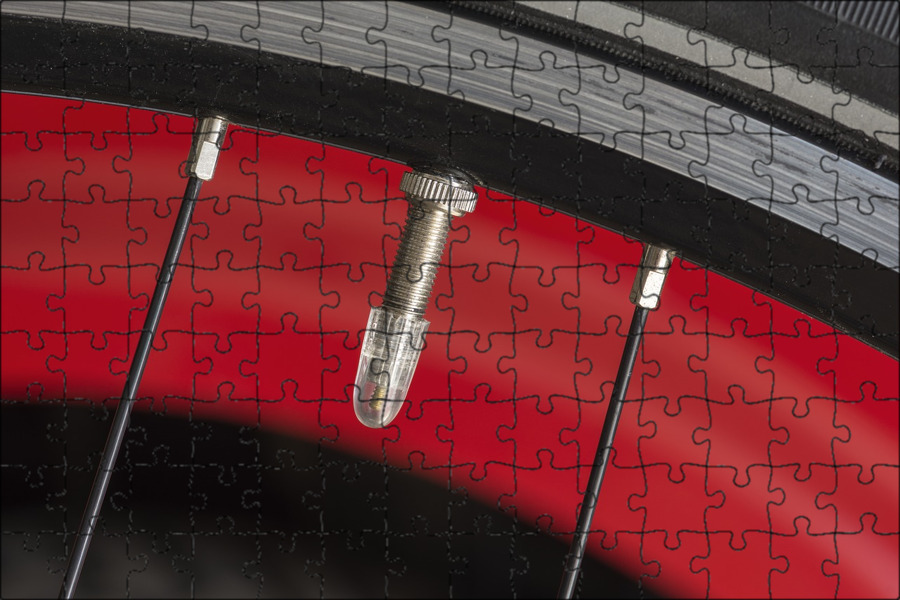
Start by cleaning the punctured area and roughing the surface with an emery cloth. For a glueless patch, simply stick it over the hole and press firmly. For a patch that requires glue, add a thin layer of glue to the tube and patch. Wait for the glue to get tacky, then apply the patch and press firmly until it adheres.
If you prefer to reuse old tubes or ran out of spares, you can try to patch the hole with a patch kit.
Katja Kircher//Getty ImagesNow inflate your new or patched tube just enough so that it holds its shape. This makes it easier to place inside the tire. Next, with the valve stem installed straight through the rim’s valve hole, position the tube inside the tire. Work the tire back onto the rim with your hands by rolling the bead away from yourself. Try not to use levers to reseat the tire, as you could accidentally puncture your new tube. When you get to the valve stem, tuck both sides of the tire bead low into the rim and push upward on the stem to get the tube inside the tire.
Check to make sure the tire bead isn’t pinching the tube by gently pushing the tire to the side as you work your way around the rim. Then inflate to the appropriate PSI and check that the bead is seated correctly.
$50 at Amazon
Credit: Silca$8 at Amazon
$6 at Amazon
Credit: Park Tool$40 at Walmart
Credit: REIIf everything looks good, reattach your wheel, making sure the quick release or thru-axle lever is on the opposite side of your drivetrain.
If you had a rear-wheel flat, lay the top of the chain around the smallest cog on your cassette and carefully push the wheel back into the frame.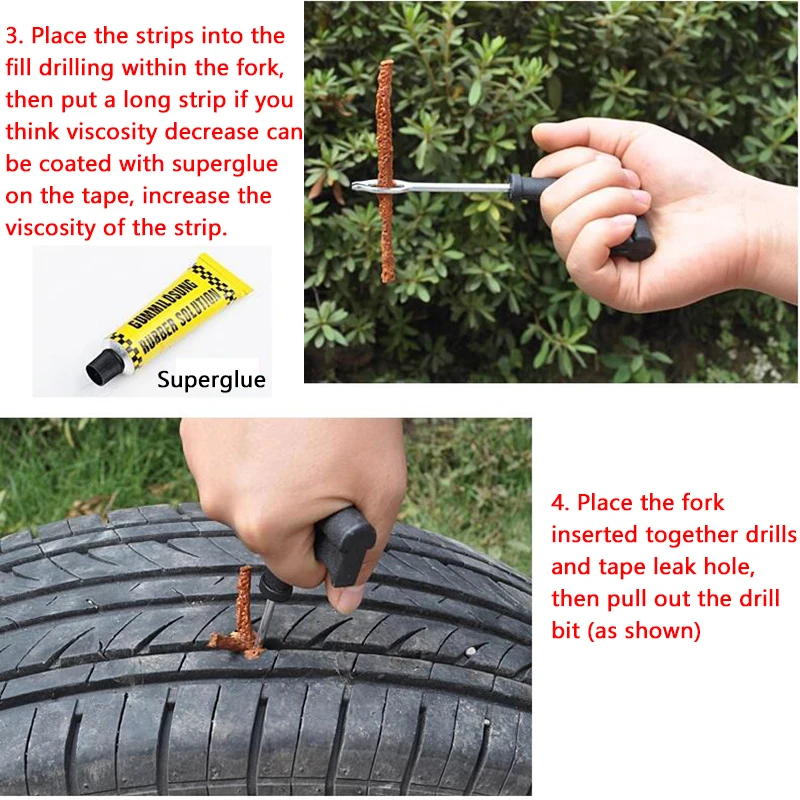 Close your quick release (and rim brakes if applicable) or insert the thru-axle back into the frame and hub and thread it closed.
Close your quick release (and rim brakes if applicable) or insert the thru-axle back into the frame and hub and thread it closed.
Finally, lift the rear wheel and spin your cranks once to make sure everything is back in place and operating smoothly. If all is good to go, get back on your bike and enjoy the rest of your ride.
Trevor Raab
For tubeless setups—all but standard in mountain biking and becoming increasingly popular on gravel, cyclocross, and even some road bikes—your sealant should do the trick without you even realizing it. Be sure to check your sealant regularly (about every three to six months) to make sure the tire has enough and that it hasn’t dried out.
But in the event of a bigger puncture or side-wall tear, you may need a tire plug to stop air loss. Plug kits come with a small strip of rubber and an insertion device, which allow you to plug the hole without even removing the wheel. Once you find the puncture and insert the rubber plug, re-inflate your tire to the appropriate pressure to see that it’s holding air. If so, start riding again, and check the repair every so often to make sure it’s holding fast. You could also add more sealant, but you’d need to carry a valve core removal tool and a small bottle of sealant.
Once you find the puncture and insert the rubber plug, re-inflate your tire to the appropriate pressure to see that it’s holding air. If so, start riding again, and check the repair every so often to make sure it’s holding fast. You could also add more sealant, but you’d need to carry a valve core removal tool and a small bottle of sealant.
Trevor Raab
If air loss is coming from a puncture bigger than a plug fix, you could try a patch or a boot on the tire. But fair warning: It’ll likely be difficult to get a patch to adhere to your sealant-coated tire without thoroughly cleaning the area. Adding more sealant or a patch could create another problem, too, by letting all the air out and breaking the seal between the rim and tire. It’ll likely be difficult to reseat the tire bead onto the rim on the spot. The easiest way to ensure your tire holds air at this point is to simply use a spare emergency tube to get through the ride and address it at home or at a bike shop.
$155 at Trek Bikes
$67 at Amazon
Keep It Clean
$10 at notubes.com
Precisely measure sealant and install with no mess.
Mid-Ride Repair
$60 at dynaplug.com
Brass-tipped plugs make fixing bigger punctures easy.
Jessica Coulon
Service and News Editor
When she’s not out riding her mountain bike, Jessica is an editor for Popular Mechanics. She was previously an editor for Bicycling magazine.
Changing a bike tire might not seem like an especially important life skill, but if you ride a bike in any capacity, it’s a skill you should learn. No one ever plans on having their ride interrupted with a flat tire, but flat tires are one of those annoyances that every rider has the displeasure of experiencing at one point or another.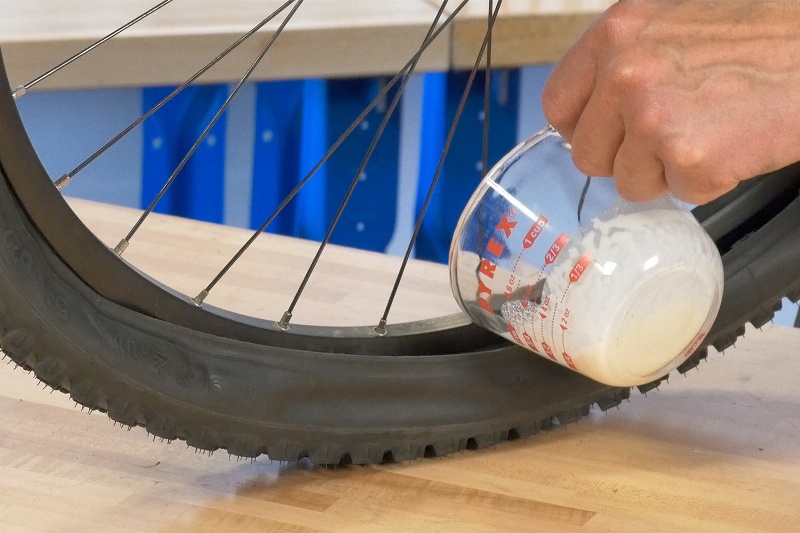 By thinking ahead and taking some time to learn how to change a flat, the hassle of having to change a tire remains just that: an annoying interruption, but not the end of your ride.
By thinking ahead and taking some time to learn how to change a flat, the hassle of having to change a tire remains just that: an annoying interruption, but not the end of your ride.
If you want to successfully change your bike tire, then before even learning the “how” of it, you first need to know and collect the “what.”
In other words, you need to be prepared, which means having a fix-a-flat kit that you take with you on each ride. At the very least, you should include the basic materials required to effectively fix your flat; what you’ll need will depend on whether you’re riding tubeless or tubed.
Putting together a fix-a-flat kit might seem like an afterthought, but having one on hand might be the difference between a minor disruption to a ride and a major aggravation. If you end up with a flat, remember - always find a safe place, away from traffic and other possible dangers, before working on your bike.
If you end up with a flat, remember - always find a safe place, away from traffic and other possible dangers, before working on your bike.
The first step in changing a flat tire might seem obvious, but here it goes: remove the wheel.
If your tires are tubeless and you have a tubeless repair kit, then you might be able to skip this step. If the damage to the tire is a simple puncture, you can just plug it without taking the wheel off. However, if you find that the damage to the tire is extensive enough to where plugging it won’t resolve the issue, then the wheel will need to be removed. To remove the wheel from your bike, start by flipping it upside down.
Pro tip: You might find it easier to work on your bike when it’s upside-down. When flipping your bike, remove the computer from the handlebars to avoid scratching it.
Removing the rear wheel might seem intimidating at first, particularly when you realize that the chain and derailleur are located in the rear. However, the process of removing the back wheel isn’t much more difficult than removing the front, especially if you take your time. To begin, first shift the bike into the smallest sprocket, creating slack in the chain for easier wheel removal and installation. Raise the bike by the saddle and while pedaling with your hand, use the right shift lever to shift gears. Repeat this, using the left shift lever, so that the chain ends up on the smallest chainring in the front as well.
However, the process of removing the back wheel isn’t much more difficult than removing the front, especially if you take your time. To begin, first shift the bike into the smallest sprocket, creating slack in the chain for easier wheel removal and installation. Raise the bike by the saddle and while pedaling with your hand, use the right shift lever to shift gears. Repeat this, using the left shift lever, so that the chain ends up on the smallest chainring in the front as well.
While typical wheel removal requires that you open the brake if you’re addressing a flat tire, then it’s likely that the tire has already lost enough air so that it slides out easily. If your bike is equipped with disc brakes, then you’re in luck because the wheels can be removed without touching the brakes. Quick releases that hold the wheel in place are especially common. To loosen the wheel via quick release, pull - do not twist - the lever out and away from the frame until it is completely open. You should be able to remove the wheel with ease by carefully lifting the bike by its saddle and letting the wheel fall out. If it doesn’t fall on its own, hitting it with the palm of your hand gently should be enough to make it drop. If it still doesn’t come out, then check to make sure the chain and derailleur aren’t stopping it. If they are, lift your bike by its saddle and, while holding it up, reach around with your other hand to pull back the derailleur and consequently, the chain. Some derailleurs are equipped with a clutch, requiring that you release the clutch and then remove the axle. Push the derailleur cage towards the crank and let the wheel drop. At no point should you find yourself trying to force anything to move.
If it doesn’t fall on its own, hitting it with the palm of your hand gently should be enough to make it drop. If it still doesn’t come out, then check to make sure the chain and derailleur aren’t stopping it. If they are, lift your bike by its saddle and, while holding it up, reach around with your other hand to pull back the derailleur and consequently, the chain. Some derailleurs are equipped with a clutch, requiring that you release the clutch and then remove the axle. Push the derailleur cage towards the crank and let the wheel drop. At no point should you find yourself trying to force anything to move.
Once the wheel has been removed, it’s time to address the tire itself.
Standard tires are designed with an inner tube, which is inflated with air. While relatively inexpensive to replace, making them a popular option, tubes can be punctured or pinched flat relatively easily. Tubeless tires don’t have an inner tube and are instead equipped with an airtight rim that the tire snuggly rests in.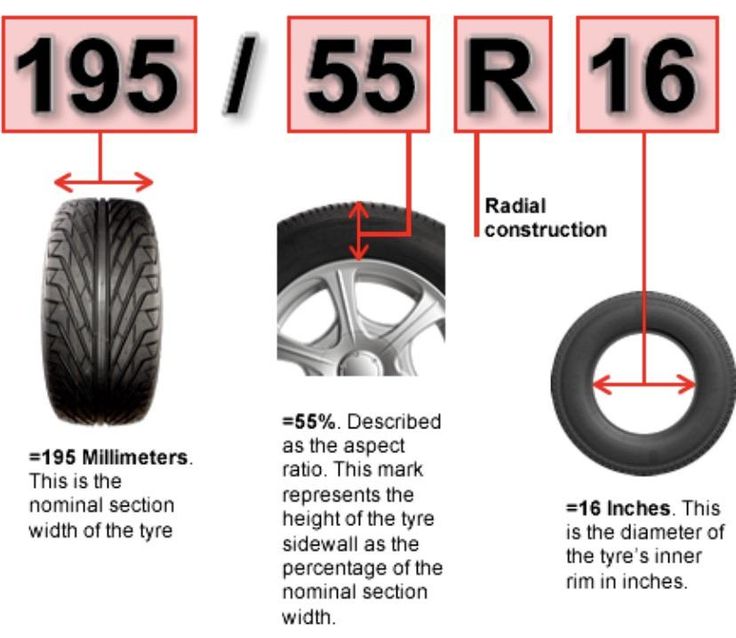
If you’re running tube, then you’ll need to remove it; if you’re running tubeless, you’ll need to patch it with a tire plug. Tire plug kits are sold at most reputable bike shops and consist of a strips of rubber and an insertion device, requiring no other equipment or changing out hardware. Most tubed tires can be converted to tubeless.
To remove the tire, you’ll need to use your tire levers. To do so, insert the flat end of the lever under the bead. Place a second lever under the bead and move along the rim until the tire is off. In most situations, you can reinstall the replacement or a patched tube without completely removing the tire. By breaking the bead on just one side, you will save a lot of time and greatly simplify the process.
While many would recommend you run your finger along the tire to search for the culprit of your flat, doing so could also result in you having to do some patchwork on your finger, too. If whatever punctured your tire is still there and it’s capable of piercing a bike tire, then your finger stands no chance against it.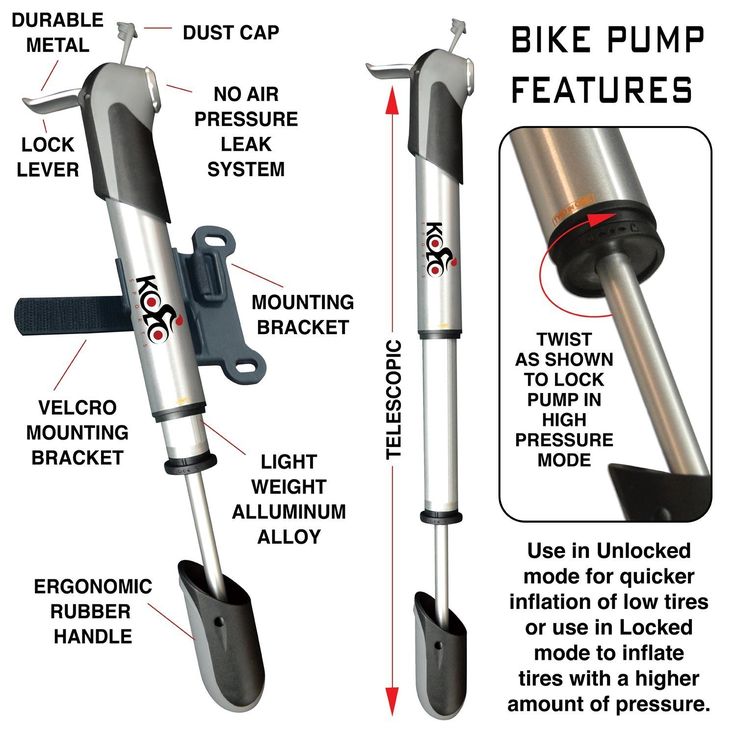 Before doing a hands-on analysis of the problem, visually inspect the tire, both inside and out, first. It might take longer, but you’ll be able to avoid a finger cut and maybe even a tetanus shot. You can also pack cotton pads or use something else to create a barrier between your finger and the sharp object that it might encounter, but there’s still a risk of injury . Tire levers are used for the removal of tires, but you can also run one along the tire for inspection purposes if you prefer playing it safe.
Before doing a hands-on analysis of the problem, visually inspect the tire, both inside and out, first. It might take longer, but you’ll be able to avoid a finger cut and maybe even a tetanus shot. You can also pack cotton pads or use something else to create a barrier between your finger and the sharp object that it might encounter, but there’s still a risk of injury . Tire levers are used for the removal of tires, but you can also run one along the tire for inspection purposes if you prefer playing it safe.
If both the visual and tactile inspections fail, reinflate the tire to see if you can hear the air leaking out of the puncture point. If you find only one puncture hole, then you’re most likely looking at road debris as being the culprit. Depending on the location and manner in which your tire has been punctured, a pointed tool, such as a screwdriver, can be used to push out the object in question before it works itself inward and creates additional punctures. If you see two holes next to each other, then it’s likely that you’re dealing with a pinch-flat, which means your flat wasn’t caused by road or trail debris; it was caused when the tube got itself pinched between the tire and rim.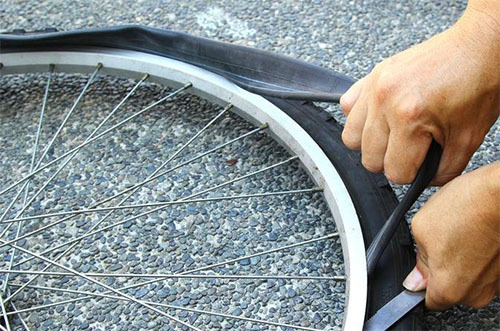
Patching tubes is an excellent option for anyone who prefers pinching a few pennies, going green by reusing, or being resourceful when there are no more spares. Patch kits are available exactly for this purpose and come with everything you need need in order to get the job done. Patch kits also happen to be very compact so they are a perfect backup, even if you prefer to replace the tube outright.
If patching is your thing, then you’ll want to start by cleaning the affected area and then roughing the surface with an emery cloth or sandpaper. Kits come with two kinds of patches: glueless and those required glue. If your kit has glueless patches, then it’s basically like putting on a bandaid: peel off the backing, place it over the hole, and press with firm pressure. If your patches require glue, then simply add a thin layer of glue to both the tube and the patch. Once the glue has reached a tacky consistency, place the patch and press firmly until you’re sure it’s solidly in place.
There are some flats that are simply too severe to patch. In those circumstances, you’ll need to skip this step and simply install a new tube.
To install your tube, you’ll start by using your pump to inflate it just enough so that it obtains its form, making it easier for installation and reducing your chances of suffering a pinch-flat. Starting with the valve stem, put the tube on the rim and insert the stem straight through the valve hole. Carefully work the tire back onto the rim by rolling the bead away from yourself using your hands, not a lever; levers increase the likelihood of accidentally puncturing the replacement tube. Upon reaching the valve stem, wrap sides of the tire bead low into the rim and push up on the stem to get the tube into the tire.
Pro tip: if you align the branding on the tire with the stem, you’ll be able to locate the stem much quicker next time.
To avoid having to deal with another flat, it’s important that you take extra care to ensure that the tire bead isn’t pinching the tube.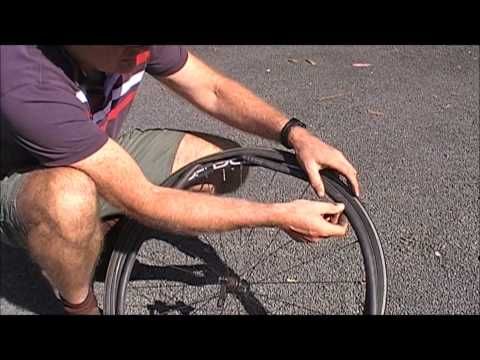 Do this by grabbing the tire with both hands and "massaging" and twisting it side-to-side as you work around the rim. This will ensure that the tube is positioned correctly inside the tire, away from the bead that can pinch it.
Do this by grabbing the tire with both hands and "massaging" and twisting it side-to-side as you work around the rim. This will ensure that the tube is positioned correctly inside the tire, away from the bead that can pinch it.
Now is when you find out whether or not your efforts paid off; it’s time to inflate your tire. To do this, you can use either a CO2 cartridge, a minipump, or both. Each method of inflation has its pros and cons, so ultimately, choose what’s most comfortable for you. If possible, equip yourself with both.
CO2 cartridges are highly effective, especially when your goal is to inflate to higher pressures, but they are a one shot deal, so there’s no reusing them. It’s a good idea to practice tire inflation at home using a CO2 cartridge to ensure that when the inevitable occurs, you don’t blow out your tube or waste the cartridge, and get left stranded. The key to using a CO2 cartridge is to ensure that the inflator is properly connected to the valve stem.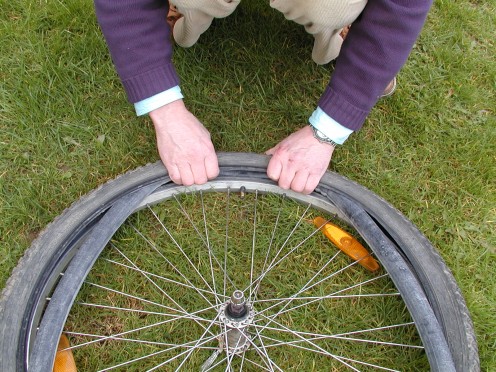
Having a minipump in your arsenal is highly recommended so that you always have a backup method for tire inflation, even if it’s not as easy to use as CO2 cartridge. Having a pump with a hose is also strongly suggested because it allows you to push the pump against the ground for better leverage, allowing you to accomplish higher pressures; pumps that attach directly to the valve stem don’t offer this advantage and might cause damage to the valve stem or even the rim when used improperly. Combination mini pump/CO2 inflators are also available.
As you’re inflating to your desired PSI, double and triple check the bead so that you’re sure it’s sitting in the rim correctly. Only after you’re certain that everything is in its proper place should you reattach your wheel.
Last but not least, it’s time to install the wheel. The processes of replacing the front and back wheels vary a bit, but neither is especially harder than the other, as long as you know how to effectively get the job done.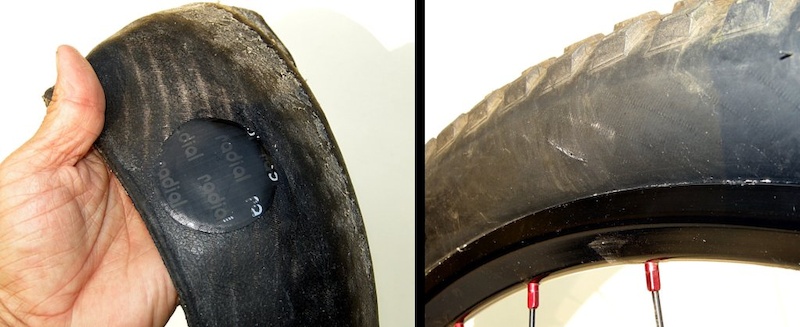
To attach the front wheel, first line up the fork dropouts with the axle of the wheel and gently lower the fork onto the axle. Carefully push down on the handlebar to check for the proper placement of the axle in the dropouts. It’s important to be mindful that the quick release or thru-axle lever is on the opposite side of the drivetrain and not touching the frame. Hold the quick release lever in place as you tighten the bolt. If you find that the lever closes too easily or ends up making contact with the frame, just open the lever and tighten the bolt a bit more. Be careful that you don’t over tighten the bolt, as it should be tightened just enough to allow you to use firm pressure when closing the quick lever. If your bike is equipped with rim brakes, don’t forget to reconnect, adjust, and check them for functionality.
If your flat occurred on the rear wheel, then lay the top of the chain around the smallest cog on the cassette and make sure the frame dropouts line up with the axle. As you gently push the wheel back into the frame, take care to also pull the derailleur down and back so that it doesn’t get in the way. In the event that the wheel doesn’t go in easily, remove it and try again. If you’re sure that the wheel properly placed, then it’s time to close the quick release (and rim brakes if applicable) or insert the thru-axle into the frame and hub and thread it shut. The final test in determining whether your bike is ready to continue its journey is by lifting the rear wheel and spinning the cranks. If it runs smoothly, then you know you’re good to go.
As you gently push the wheel back into the frame, take care to also pull the derailleur down and back so that it doesn’t get in the way. In the event that the wheel doesn’t go in easily, remove it and try again. If you’re sure that the wheel properly placed, then it’s time to close the quick release (and rim brakes if applicable) or insert the thru-axle into the frame and hub and thread it shut. The final test in determining whether your bike is ready to continue its journey is by lifting the rear wheel and spinning the cranks. If it runs smoothly, then you know you’re good to go.
Flat tires are already unplanned and unexpected; planning ahead by prepping a fix-a-flat kit and learning how to change your tire can ease your mind for such unfortunate circumstances, but what do you do when even fixing your flat doesn’t go as planned? Read on for some quick, easy solutions when even flat tires don’t go your way.
Small, unfixable punctures. Super glue is already a life-saver in so many situations, so why should cycling prove to be any different? Super glue is a great quick fix for smaller punctures that might not be fixable otherwise, albeit temporary.
Super glue is already a life-saver in so many situations, so why should cycling prove to be any different? Super glue is a great quick fix for smaller punctures that might not be fixable otherwise, albeit temporary.
Large, unfixable punctures. If you find that you end up with a hole that’s simply too big to repair, then it’s time to resort to some out-of-the-box thinking. Cut out the damaged innertube section and tie the two ends together. It’ll be obvious to you that it’s not a perfect solution, but you should at least be able to reach about 50 psi, which is certainly enough until you can better resolve your tire situation.
Unfixable tire and sidewall gashes. In the event that your tire or the sidewall of your tire ends up sliced or gashed beyond standard repair, don’t despair; make a boot instead. Using a dollar bill, old gel wrapper, or piece of duct tape to cover the hole from the inside is a quick, easy way to resolve your emergency until you get home. It might not be ideal, but it should suffice until a more permanent resolution can be made.
Learning the skill of bike tire repair can be thought of as a form of insurance: you might not want it and you might never use it, but if ever find yourself in a situation where you need it, you’ll be glad it’s there. The folks at Velosurance are all cyclists and understand that it’s only a matter of time before an unfortunate circumstance arises. From gap medical to liability, vehicle contact protection to even roadside assistance - for when you’ve got a flat and are fresh out of options - Velosurance offers a highly customizable policy to provide coverage for nearly any cycling associate risk. Whatever your needs, chances are, there’s a policy for you.
What to do if the heating battery has leaked in the cold season? The main thing is not to delay! The flow of water can intensify at any time, ruin floor coverings, walls, furniture and flood neighbors. It is necessary to repair the damage immediately, at the first sign of a leak.
Contents of the article
Batteries and pipes adjacent to them are constantly exposed to pressure, high temperatures and impurities contained in heat transfer fluids. Therefore, over time, materials break down and leaks occur. The longer a radiator is used, the more likely it is to leak.
What causes leaks:
 The process extends deep into the metal and destroys it. The situation is often aggravated by the owners themselves, who use the heating circuit for grounding. As a result, microcurrents arise that enhance oxidation. Corrosion is also caused by oxygen gas produced in empty batteries. Therefore, it is not recommended to leave the system unfilled for longer than 15 days.
The process extends deep into the metal and destroys it. The situation is often aggravated by the owners themselves, who use the heating circuit for grounding. As a result, microcurrents arise that enhance oxidation. Corrosion is also caused by oxygen gas produced in empty batteries. Therefore, it is not recommended to leave the system unfilled for longer than 15 days. 
There is an opinion among residents that a small radiator leak is not worth attention. They are sure that over time this place will “boil” and the heater will stop flowing.
But often the situation ends badly - at some point the leak increases sharply, the water floods the room and apartments downstairs. Therefore, if the radiator digs even a little, it needs to be urgently repaired.
It is important to take immediate action:
 If water splashes, cover the leak with a blanket and redirect the liquid into a large container.
If water splashes, cover the leak with a blanket and redirect the liquid into a large container.  16273-SK / 07, and in 2020 it was repeatedly supported by the Supreme Court.
16273-SK / 07, and in 2020 it was repeatedly supported by the Supreme Court. However, the Criminal Codes do not always comply with the laws, and the repairmen who arrive often simply block the line, and the owners themselves have to deal with the repair of radiators. It is not always possible to quickly hire specialists, so it is advisable to have an idea of \u200b\u200bhow to fix leaks in batteries yourself. These skills will also be useful to the owners of private houses and summer cottages, who themselves monitor the state of the heating system.
Meet the radiators Teplopribor
Watch video
Benefits of radiators TEPLOPRIBOR
Reliable and durable
- operate at pressures of 16–20 atm. and withstand surges up to 30 atm. Their service life is from 25 years.
Have a long warranty
- 10 years for aluminum models,
for bimetal models - 15 years.
Composed of 90% Russian materials
- We work with raw materials obtained directly from leading Russian smelters and domestic components.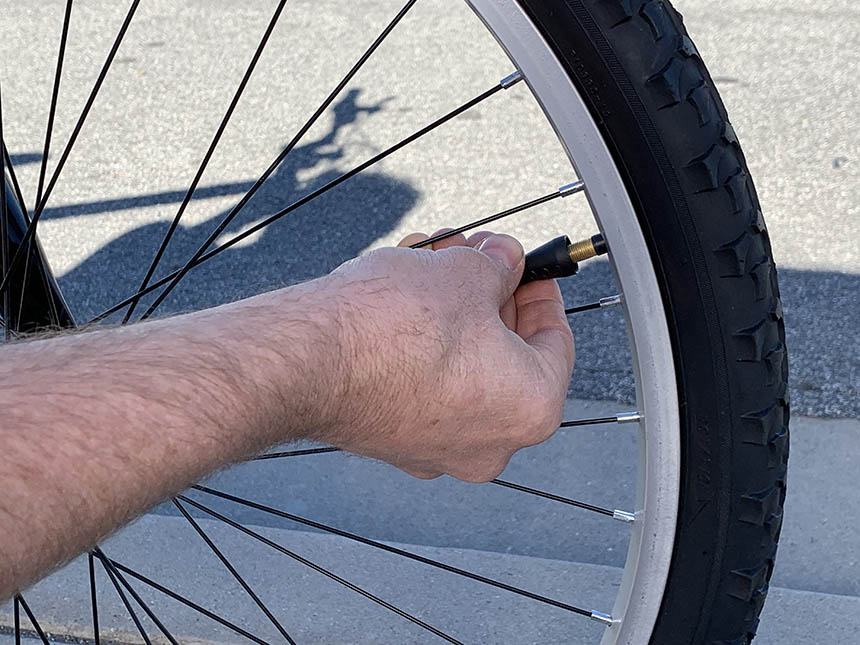
Suitable for various heating systems
- can be installed in one-pipe, two-pipe, independent heating systems with top and bottom connections.
Light and compact
– the company produces
radiators with a mass of one section from 1.06 to 1.94 kg. Their size ranges from 400x80x90 to 567x80x90 mm.
Powerful
- heat dissipation of 500mm products is 185W - 191W,
and 350mm products are 134-138W. According to this indicator, they are not inferior to world brands.
You can fix defects in the radiator housing in different ways:
All these measures have only a temporary effect. A battery that has already dripped is likely to depressurize again. Therefore, it is better to replace the radiator, especially if it has worked for more than a dozen years.
Various sealants can be used to repair batteries:
There are special sealants for the heating system, which can be used to repair even damp radiators and pipes. This is convenient because you do not have to wait for the leak to dry out.
Clean the area around the defect to remove paint and rust before applying an airtight filling. It is convenient to do this with a stone for sharpening knives (whetstone). Degrease the surface and apply a sealant to it so that it completely closes the leak and protrudes slightly beyond it.
Wait until the adhesive, sealant or cold weld is completely cured. Previously, it was impossible to supply water to the pipes - the liquid would destroy the seal and the radiator would again begin to dig and leak.
Previously, it was impossible to supply water to the pipes - the liquid would destroy the seal and the radiator would again begin to dig and leak.
This is how pipes that fit into a radiator are repaired. Take a rubber gasket, wrap it around the damaged area and put an aluminum clamp on top.
If no clamp and spacer are available, cut a patch of the correct size from a bicycle tire, wrap it around the pipe and secure it tightly with wire.
This method is also used to seal pipes leading to the battery. Dilute a small amount of cement with room temperature water to make a mixture that looks like thick sour cream. Soak a bandage with the solution and wrap the damaged area with such a bandage. The battery can be used after the solution has hardened.
To speed up the work, you can replace the cement with alabaster, diluted with water to a creamy state. The alabaster solution sets instantly, so you need to close the leak quickly.
Seal leaking joints between battery sections. Take a moisture-resistant glue that is resistant to high temperatures, saturate the fabric with it and place the patch on the defect. Wait until the glue dries, and only then open the supply valve.
The surest way to get rid of a leak is to weld it up. To do this, you need to turn to professional welders who have the tool and the necessary skills. An attempt to do this on your own will end badly - the weld will quickly begin to leak and become unusable.
All proposed measures are temporary. At the first opportunity, you need to invite a craftsman who will weld the defect, or better, replace the heater or a rusted pipe.
First you need to determine where the coolant is leaking from. These can be sections, connections between them, joints between radiators and a pipe, and the pipes themselves. Then repair using one of the methods described below.
Then repair using one of the methods described below.
Remove paint and rust from damaged area. To do this, you can use tools for grinding, solvents and liquids such as "anti-rust". Be sure to make a small allowance, capturing neighboring areas. Clean the cleaned metal surface with sandpaper or a stiff brush.
Repair the defect with metal epoxy, which cures in five minutes. Cold welding is also suitable - but then you will have to wait 2-3 hours for drying.
Plug small defects with a wooden wedge. Drill the fistula a little into sections and drive a plug into the resulting hole. The wood will swell from the liquid, and the battery will become airtight.
Remove paint and rust from the metal in the damaged area. Prepare the epoxy as instructed and apply it to the defect. You can cover up the leak with cold welding or wrap it with a cloth moistened with moisture-resistant heat-resistant glue.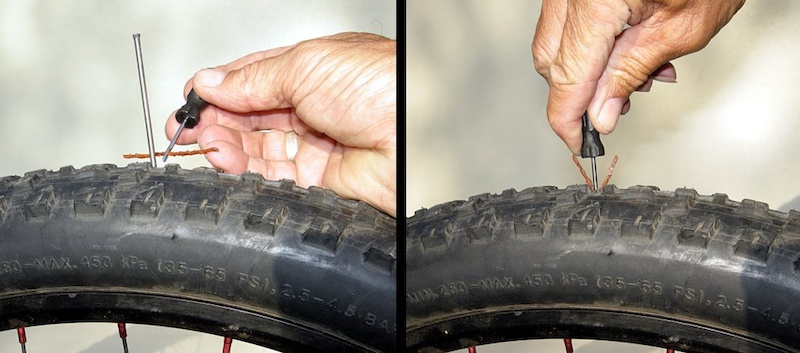 Turn on the batteries only after the patch has completely dried.
Turn on the batteries only after the patch has completely dried.
Inside such a connection there is a sealant - linen tow or fum-tape, which lose their properties over time. To restore the tightness of the joint, the sealing material must be replaced.
Take a wrench and use it to unscrew the connection. Remove the old seal and replace it with a new one. You can use linen tow, lubricated with plumbing sealant, or fum tape. Then screw everything back.
If the failure is caused by corrosion at the joint, the situation cannot be corrected on its own. It is necessary to call a master who will weld the defect or replace rusted elements.
A leak can be sealed with plumbing rubber and a clamp. If they are not available, take a piece of a bicycle tire, wind it around the pipe and tighten it with wire. The water will stop running to the floor.
Can be repaired with cold welding on a wet surface. It is necessary to clean the metal in the place of damage from paint, rust and close up the leak. After the welding hardens, the pipe will again become airtight.
It is necessary to clean the metal in the place of damage from paint, rust and close up the leak. After the welding hardens, the pipe will again become airtight.
Inspect radiators and related plumbing. Replace pipes with traces of rust with clamps before the start of the heating season.
Assess the condition of valves, collectors and other elements of the heating system hidden in boxes and niches. You should not forget about them so that in winter you do not encounter leaks and urgent repairs.
Estimate the life of your batteries. If it has passed, replace the radiators with new ones without waiting for a leak.
It's also a good idea to change old worn out pipes, even if they haven't leaked yet. Then, at the height of the heating season, they will not have to be urgently repaired.
Don't miss new articles!
Subscribe to our newsletter
A leak from a metal heating or plumbing pipe can be a real disaster. Puddles, flooded and swearing neighbors, damaged floors and walls ... Leaks need to be fixed urgently, and if there is no time or money to replace pipes, simple but effective methods will do.
Puddles, flooded and swearing neighbors, damaged floors and walls ... Leaks need to be fixed urgently, and if there is no time or money to replace pipes, simple but effective methods will do.
A leak can occur for a variety of reasons: the pipe simply wore out, rusted, the welder did not work well, the water was not drained from the system in the country house and the pipes froze ... In any case, you need to act as quickly as possible to prevent a communal disaster.
The first and the easiest and fastest way to temporarily fix a leak, for example, on a metal pipe thread, is to use a medical bandage soaked in water and sprinkled with salt. The bandage is wetted and wrapped tightly around the leak, each turn is accompanied by sprinkling with salt. This is a temporary way! Just to hold out until the arrival of the masters and the opportunity to replace or overhaul the pipe.
The second way to eliminate the leak is also associated with the use of a medical wide bandage. It is necessary to dilute the cement to the state of gruel and soak the bandage in the solution. Then, they wrap the place of leakage tightly, in several layers. The cement will harden in a couple of hours, sealing the leak. If it is decided not to change the pipe yet, you can clean the winding place with sandpaper and paint over. But still, this method of repair cannot be called long-term, although it is a more reliable option than a bandage with water and salt.
It is necessary to dilute the cement to the state of gruel and soak the bandage in the solution. Then, they wrap the place of leakage tightly, in several layers. The cement will harden in a couple of hours, sealing the leak. If it is decided not to change the pipe yet, you can clean the winding place with sandpaper and paint over. But still, this method of repair cannot be called long-term, although it is a more reliable option than a bandage with water and salt.
Third , one of the most popular options for repairing a crack in a metal pipe is to use a clamp. Factory clamps are sold in different sizes, you need to choose according to the diameter of the pipe. Rubber is placed under the collar, you can cut a piece, for example, from a bicycle tire, the top of a rubber boot, a thick work glove. A harness, rope, hose, flexible wire can replace the factory clamp.
Important! Before starting the repair of a cracked metal pipe, it should be cleaned of rust and old paint, mark the place of the leak and dry it.
The fourth option is used if the water cannot be shut off, the clamp does not hold, and the cause of the leak is a fistula. In this case, you can cut a small conical wedge out of wood and drive it into the hole. You need to drive the wedges into the place of the leak very carefully, this is a temporary measure, but the owners will have the opportunity to do a thorough repair without a fountain from the pipe.
The fifth method involves the use of adhesive or cold welding. The place of leakage, in this case, must be dried, cut out a piece of rubber, plastic, fiberglass, flexible steel of a suitable size with a margin of two to three centimeters. The material is lubricated with an adhesive, it is better to use epoxy, or cold welding, it is firmly pressed against the leak. You have to wait until the adhesive sets. There are varieties of ready-made cold welding of the consistency of plasticine, with such a composition you can simply cover up, plug a crack or hole.